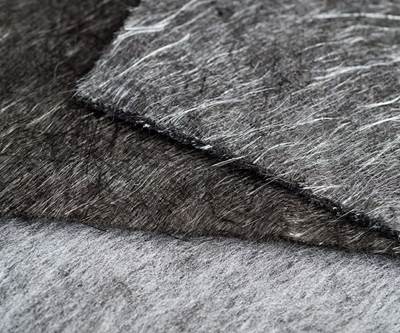
As part of the 10th annual World Green Building Week, which took place in September 2019, the World Green Building Council (WorldGBC) issued a bold vision for how buildings around the world can reach 40% less embodied carbon emissions by 2030. To meet this goal, changes need to be implemented throughout a building’s infrastructure.
According to WorldGBC, buildings and construction are responsible for 39% of global energy-related carbon emissions. Out of this, 28% come from the operational “in use” phase to heat, power and cool buildings, while 11% of these emissions are attributed to embodied carbons, the carbon released during construction and material manufacturing. But no matter where these carbon emissions come from, the sector must tackle energy inefficiency across the entire building lifecycle. A way of improving building efficiency is to evaluate where energy is wasted. One area that contributes to a large portion of wasted energy is through a building’s entry and exit points — its windows and doors.
Keep heat in
On average, around 30% of a building’s heat escapes through its windows alone. During colder months, the efforts of a building’s heating system can be in vain, as much of the expense and energy to keep the building at a desirable temperature goes to waste.
Unlike metal, fiberglass composite materials are effective thermal insulators, making them the ideal candidate for window and door frames. Typically, insulation in an aluminum window frame is referred to as a thermal break — the continuous barrier between the inside and outside window frames that prevents thermal energy loss. While effective, this insulation method requires thicker frames, which can alter the desired appearance of windows. The insulating properties of composite materials such as fiberglass mean that there is no need for a thermal break, as the material is capable of ensuring thermal efficiency alone.
Built to last
When a wooden frame faces change in moisture and humidity, it risks warping, swelling or contracting. This can impact the condition and operation of the window or door and create draft space for warm air to escape and cold air to leak out. Repeated exposure to moisture may even cause rot. Unlike wood, fiberglass does not expand or contract when exposed to wet or humid conditions, and it does not rot, meaning it can last longer and work effectively in any environmental conditions.
While another common window frame and door material, polyvinyl chloride (PVC), does not swell or warp like wood, it presents its own challenges. PVC can be easily misshapen, so metal inserts are sandwiched between the exterior and interior frames of the window to match wood’s structural stiffness. However, a problem arises when the seal binding these elements together isn’t maintained — stopping it from keeping the elements out and the heat in. These inserts create complexity, and complexity can create costs. Fiberglass window frames do not require structural inserts, as the stiff material is manufactured in a single profile.
Combining forces
From a materials performance perspective, fiberglass offers several benefits over traditional materials. First, it has inherent stiffness and strength that obivates the need for adding stiffeners, and this simplifies the manufacturing process. Secondly, fiberglass is resistant to thermal expansion, corrosion and rot. This means less maintenance over the lifespan of the window or door frame. Thirdly, fiberglass frames are a great insulator, helping to retain heat or cooling to help save energy.
No matter where you use composites, the benefits of the material will greatly impact the efficiency of windows and doors. In order to improve sustainability, homeowners and construction companies will have to take a number of measures to reduce unnecessary energy loss. Windows and doors may be a necessary feature in any home, but the wasted energy that escapes through them is anything but needed. To tackle lost energy and improve efficiency, composite materials for windows and doors are an advantageous option.
About the Author
Gert de Roover
Gert De Roover has 15 years of experience in the composite materials sector. Coming from the Hilti construction company, he began his career at Exel Composites as a sales representative before becoming sales manager. After this success, he continued his journey by achieving the position of head of the building, construction and infrastructure segment at Exel Composites. He believes in the potential of composite materials for their versatile, resistant and durable properties. He has a passion for architecture, design, classic cars and sports.
Related Content
Time Bicycles to modernize composite bicycle manufacturing
With the aid of KraussMaffei, Clemson University and SC Fraunhofer USA Alliance, Time anticipates a transition to HP-RTM for more efficient carbon fiber bike frame manufacture, plus a new facility in South Carolina.
Read MoreGlass fiber-reinforced Akulon RePurposed recyclate enables Ahrend sustainable office chair
Envalior 30% glass fiber-reinforced Akulon RePurposed material helps Ahrend achieve lighter task chair with closed-loop value chain and reduced emissions.
Read MoreColored carbon fiber composite bike wheels launched at The Cycle Show
Wheel brand Parcours reveals composite bike wheels using Hypetex colored carbon fiber to achieve aesthetic, lightweight and performance goals.
Read MoreComposites end markets: Electronics (2024)
Increasingly, prototype and production-ready smart devices featuring thermoplastic composite cases and other components provide lightweight, optimized sustainable alternatives to metal.
Read MoreRead Next
FiberCore Europe partners with Sustainable Infrastructure Systems to produce composite bridges in Australia
Patented technology used in more than 900 bridges and lock gates worldwide will have up to 40% recycled plastic by 2021.
Read MoreSustainability matters: Now, not just in the future
Public opinion on plastics will sharpen the focus on sustainability in composites manufacturing.
Read MoreVIDEO: High-volume processing for fiberglass components
Cannon Ergos, a company specializing in high-ton presses and equipment for composites fabrication and plastics processing, displayed automotive and industrial components at CAMX 2024.
Read More























